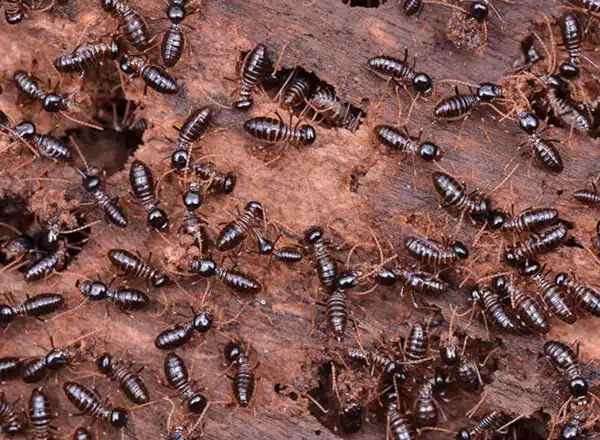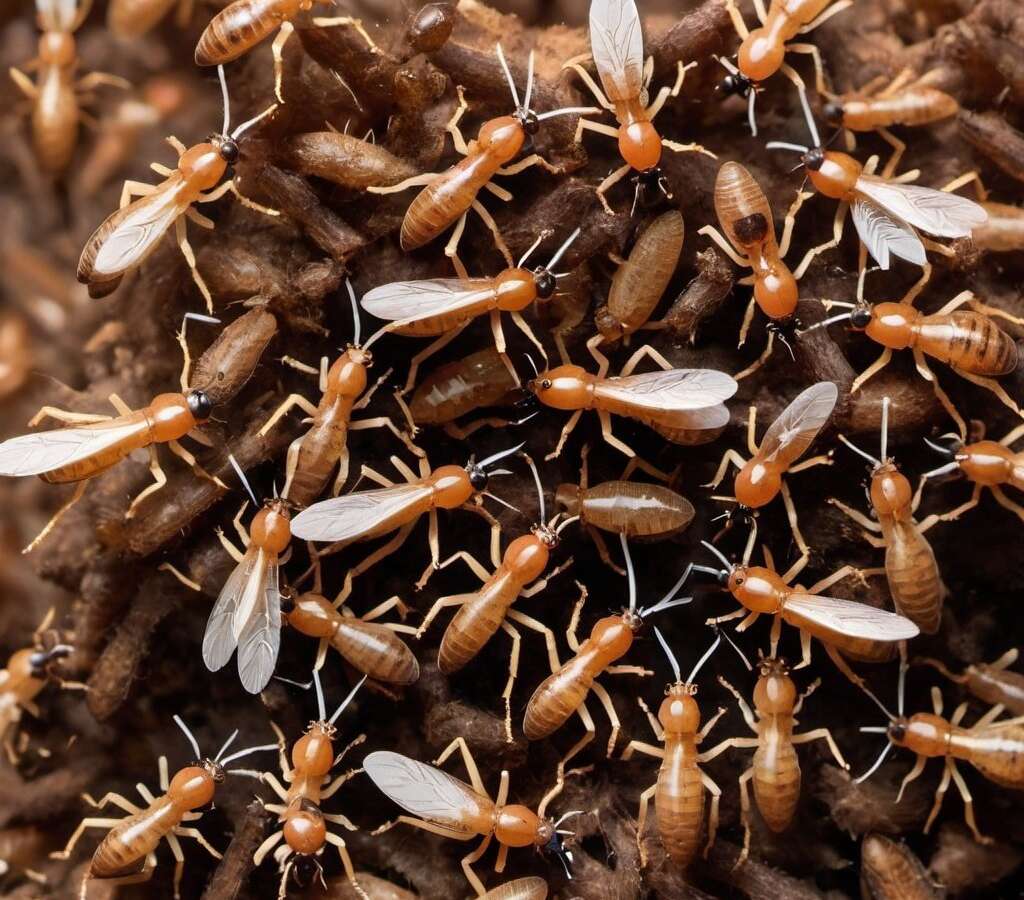If you’re having issues with termites or any other insects, it’s time to call your Tulsa exterminator, they can help. Termites are a very special insect. This pest can do millions of dollars of damage every year in American homes and businesses. It’s a wood destroying pest that consumes drywall, wooden studs, and support beams. With enough time and effort, these insects can bring disastrous results to any building you may be living or working in. So in this article, let us take a good hard look at termites, their lifecycle and what are you and your Tulsa exterminator can do to stop them from damaging your home.
COLONY TERMITES, AND TULSA EXTERMINATOR
Termites are eusocial insect. This means that they live in a colony and divide their work up amongst their numbers. A typical termite colony can get its population well into the millions. In order to keep everything moving smoothly, they will separate the work by castes. There are three casts in the termite caste system. They are reproductives, soldiers, and workers. The workers are the most numerous. These insects can be in multiple stages of their lifecycle and be either male or female. A worker still in the adolescent stage can still change its caste if it’s necessary for the betterment of the colony. The workers are tasked with foraging for food, bringing food back to the colony, feeding the other termites, tending to the young, taking out the trash and many other menial tasks.
The next group of termites are soldier termites. Once a termite becomes a soldier termite, there is no turning back. These termites will lie dormant until an attack arises. Then they will head straight into the fray, forcing their enlarged heads and powerful mandibles into the battle. As they fight away their attackers, the workers will fill in the tunnel behind them. These termites will give their life for the safety of the colony. If you have an issue with termites, it’s time to call your Tulsa exterminator for help.
TERMITE REPRODUCTIVES AND TULSA EXTERMINATOR
The termite colony must reproduce in two areas. The first area is by maintaining enough of a population to do all the work of the colony. This is done by the queen. This an enlarged female that will lay eggs all day. She will lay eggs until the day she dies both night and day. In order to keep up the millions in population, there is a lot of work in egg laying. She is the heart and soul of the colony. But in addition to laying eggs, the colony itself must at some point multiply itself. In other words, another offshoot must come from the colony to create a second new colony. This is where Swarmers come in.
TERMITE SWARMERS AND TULSA EXTERMINATOR
Swarmers are a special kind of termite that are very hearty. These termites do fine in the open air and don’t worry about drying out like the others do. They have wings and can fly. In the early spring time in April and May, the workers will build special tubes called swarming tubes. These tubes will go straight up the side of an object into the outside air and have an opening at the end of them. The swarmers will leave the colony through these tubes. They will seek out a large swarm of other flying termites from other nearby colonies of the same species. Here these insects will fly around, searching for a mate.
Predators will make take advantage of this large cloud of insects. Usually in most cases, only 2 to 3% of swarmers will find a mate and search for a place to start the colony. After they do this, they will land, lose their wings and dig a royal chamber. This royal chamber will be the first room in the large colony. The male and female will mate and the queen will begin to lay her eggs. After this, the king will become a worker until the eggs are hatched, and the new nymphs will start to take up the roles as workers. The king will die. If you think you have termites, then its time to call your Tulsa exterminator
TERMITE SIGNS AND TULSA EXTERMINATOR
In order to identify if you have a problem with termites, it’s important that you know what the signs of termite activity are. The first one, that we mentioned earlier were these mud tubes. These insects dry out very quickly in the open air, and will die within a matter of minutes if they are not in humid air. In order to bring the humid air from the underground above, they will build tubes up the side of walls and trees, in order to forage for food above ground. If you’re seeing these mud tubes, coming up the side of your house, then it’s time to contact that Tulsa exterminator.
Also, sometimes these mud tubes may come up inside a wall. They will feed upon the drywall as they go. As they break down the paper and gypsum board in the center, there will be soft spots in the wall. Sometimes they’ll actually break through the outside paper and you’ll see a small hole with dirt pushed into it. This is another sign that you may be dealing with termites. Contact your Tulsa exterminator for help.
GETTING HELP FROM YOUR TULSA EXTERMINATOR
And lastly, you may see swarmers inside your house. If you do, they will merely try to go to the windows and doors where there is sunlight getting in. You’ll often see dead swarmers in the windowsill where they try to escape. If you see these flying termites, you have a colony that’s been attacking your house. It’s time to call your Tulsa exterminator.
If you’re having an issue with termites or any other pests, then you should contact a Tulsa exterminator that you can trust. Here at TermMax pest control, we are the best in the business when it comes to dealing with termites, or any other insects. We service the greater Tulsa area, including Broken Arrow, Coweta, Claremore, Catoosa, Bixby, Jenks, Sapulpa, Sand Springs, Prattville, Turley, Owasso and so much more. Call today for free estimate. We’re here to help!



